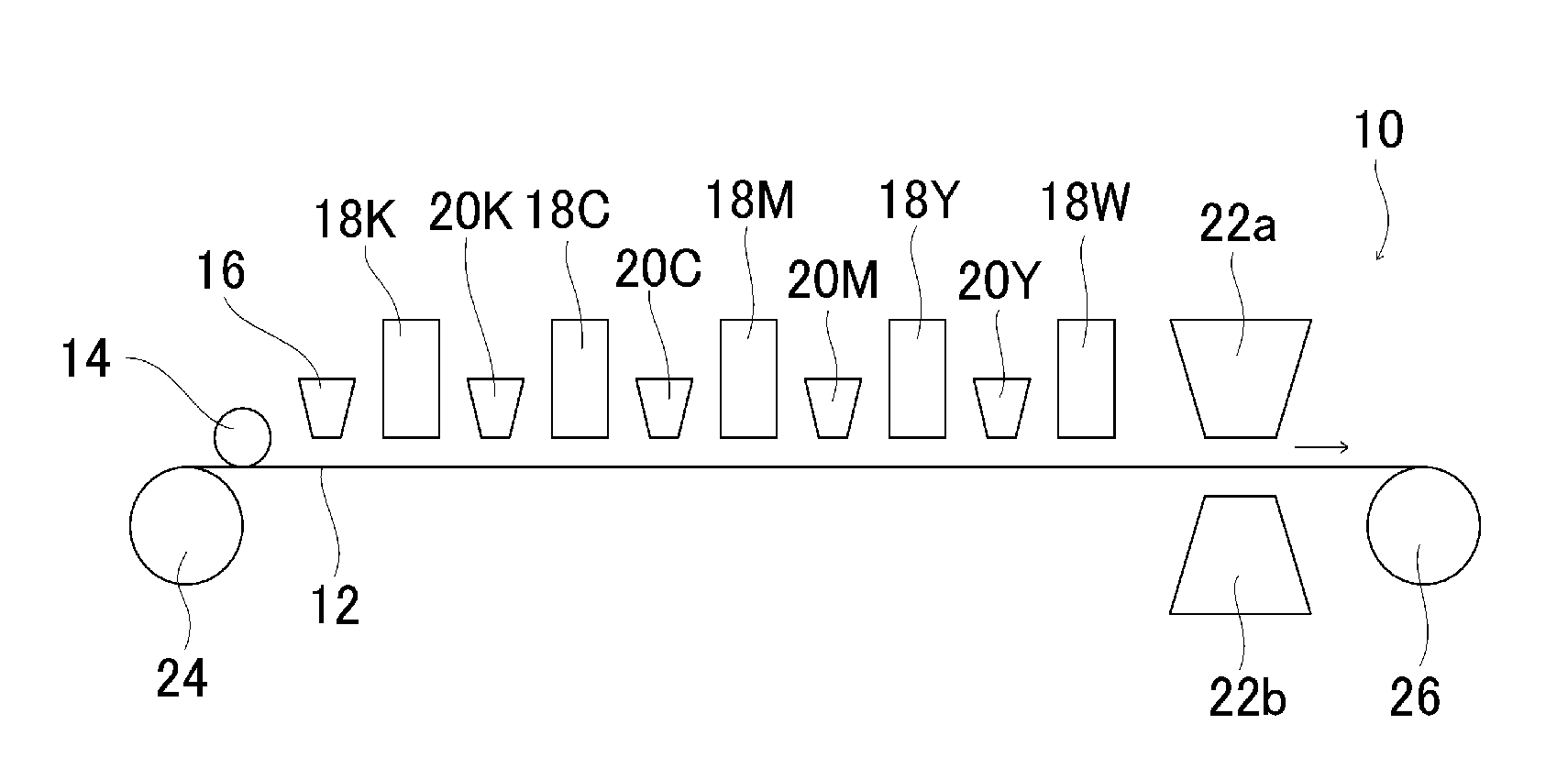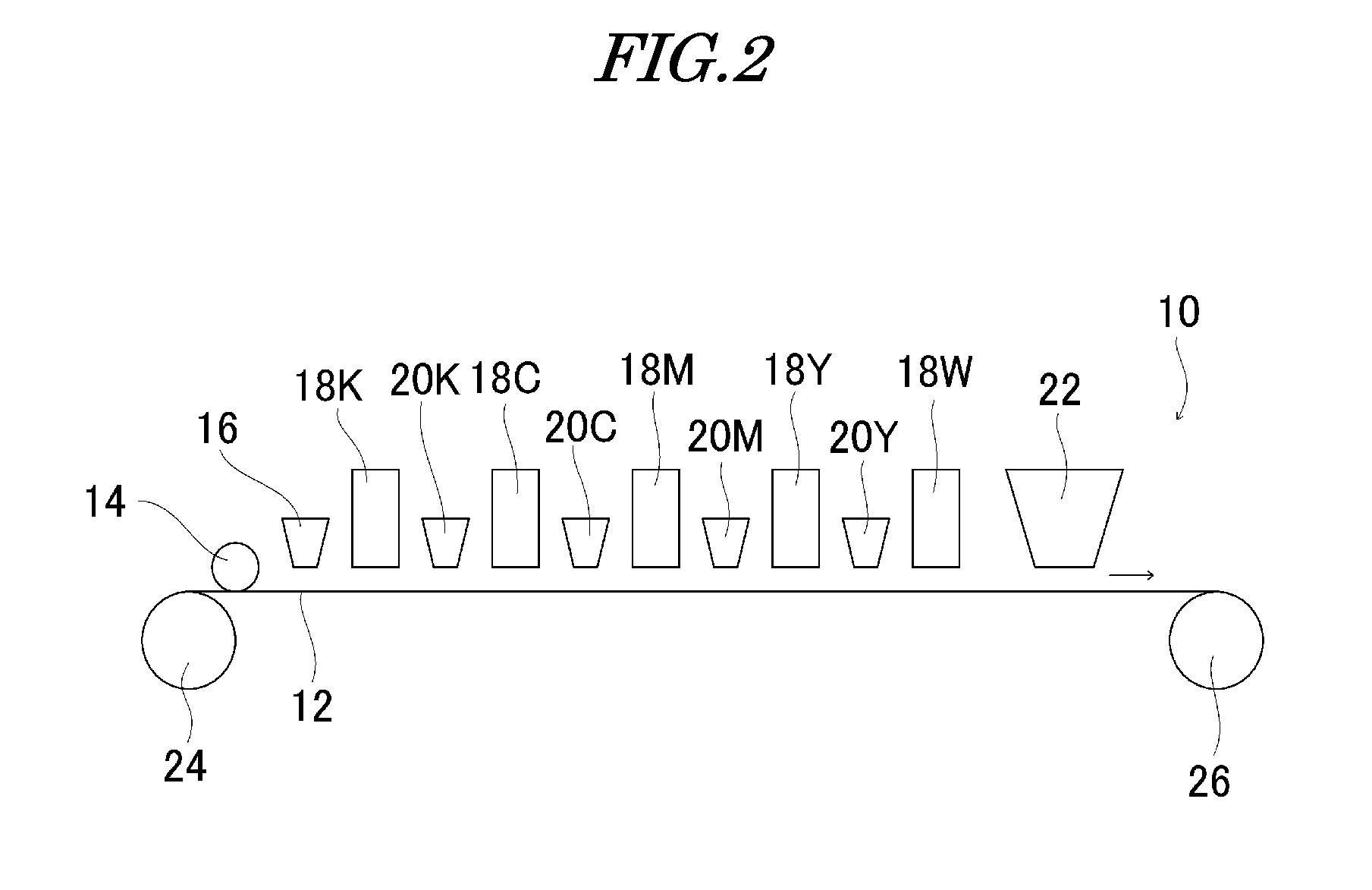Inkjet recording method and printed material
a recording method and printing technology, applied in the direction of printing, duplicating/marking methods, inks, etc., can solve the problems of difficult use, low productivity, and inconvenient dry electrophotographic methods for plastic substrates
- Summary
- Abstract
- Description
- Claims
- Application Information
AI Technical Summary
Benefits of technology
Problems solved by technology
Method used
Image
Examples
examples
[0292]The present invention is explained below more specifically by way of Examples and Comparative Examples. However, the present invention should not be construed as being limited by these Examples.
[0293]‘Parts’ below means ‘parts by mass’ unless otherwise specified.
[0294]The materials used in the present invention are as follows.
[0295]IRGALITE BLUE GLVO (cyan pigment, BASF Japan)
CINQUASIA MAGENTA RT-355-D (magenta pigment, BASF Japan)
NOVOPERM YELLOW H2G (yellow pigment, Clariant)
SPECIAL BLACK 250 (black pigment, BASF Japan)
TIPAQUE CR60-2 (white pigment, Ishihara Sangyo Kaisha Ltd.)
[0296]SOLSPERSE 32000 (Noveon dispersant)
[0297]SR9003 (PO-modified neopentyl glycol diacrylate, Sartomer)
3-Methyl-1,5-pentanediol diacrylate (SR341, Sartomer)
1,10-Decanediol diacrylate (CD595, Sartomer)
PEGDA (polyethylene glycol diacrylate, SR344, Sartomer)
PPGDA (polypropylene glycol diacrylate, Wako Pure Chemical Industries, Ltd.)
[0298]IRGACURE 819 (bis(2,4,6-trimethylbenzoyl)phenylphosphine oxide, BAS...
PUM
| Property | Measurement | Unit |
|---|---|---|
| peak wavelength | aaaaa | aaaaa |
| peak wavelength | aaaaa | aaaaa |
| visible light transmittance | aaaaa | aaaaa |
Abstract
Description
Claims
Application Information
 Login to View More
Login to View More - R&D
- Intellectual Property
- Life Sciences
- Materials
- Tech Scout
- Unparalleled Data Quality
- Higher Quality Content
- 60% Fewer Hallucinations
Browse by: Latest US Patents, China's latest patents, Technical Efficacy Thesaurus, Application Domain, Technology Topic, Popular Technical Reports.
© 2025 PatSnap. All rights reserved.Legal|Privacy policy|Modern Slavery Act Transparency Statement|Sitemap|About US| Contact US: help@patsnap.com



